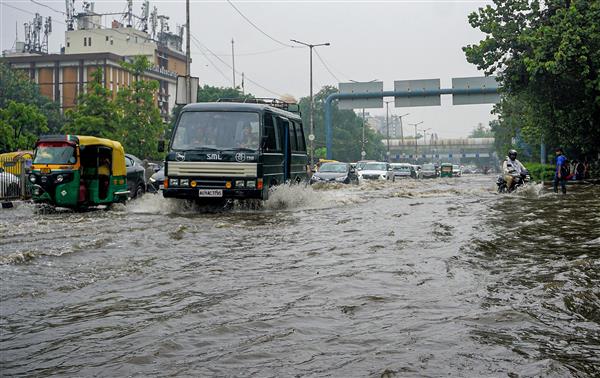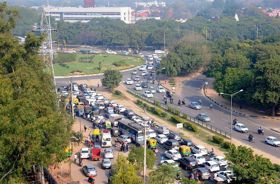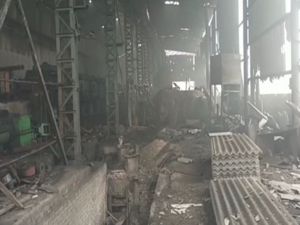
Photo for representation. PTI
Vibha Sharma
Chandigarh, July 10
Blame it on climate change and confluence of more than one weather system, but can the human role in the unfolding havoc, especially in the hills, be ignored?
Unprecedented rains in Himachal Pradesh, Chandigarh, Punjab, Haryana and Delhi over the past three days have taken by surprise the residents and perhaps also exposed the ill-preparedness of the authorities concerned.
Inundating low-lying areas, the record rains triggered flash floods and landslides, claiming lives and causing extensive damage to infrastructure—roads, bridges, houses—in Himachal Pradesh and the adjoining plains in what seemed to be a reminder of the devastating flash floods of Uttarakhand in 2013.
Two systems combined
IMD director-general Mrutyunjay Mohapatra attributed the rains to the confluence of two active weather systems—monsoon current and western disturbance over the Western Himalayan Region. The confluence of the WD and active monsoon led to the intense and prolonged spell of rain, he said.
Significantly, even though the cumulative rainfall this monsoon has gone above the normal mark, many parts of the country are reeling under drought-like situation.
The difference between different parts of India is also a stark reminder of changing patterns, excess rains over some parts and deficit in others, close to 40 per cent of the country's land mass. The good part is that the rains have improved the levels in the country’s reservoirs and ground water, however, rain-triggered fury and landslides in hills and inundation of cities and towns in knee-deep water became yet another example of poor infrastructure planning and haphazard development in the country.
What next, relief expected
According to the IMD, the monsoon trough is active with its western end to the south of its normal position and eastern end to the north of its normal position. A cyclonic circulation lies over central Rajasthan in lower tropospheric levels. A WD in lower and mid-tropospheric westerlies runs from north Pakistan to northeast Arabian Sea. The off-shore trough at mean sea level runs from south Gujarat coast to north Kerala coast.
As a result, light/moderate fairly widespread to widespread rainfall with isolated heavy to very heavy rainfall is very likely for Western Himalayan Region, Punjab, Haryana-Chandigarh-Delhi and Rajasthan for the day that is Monday. The action will then shift towards Uttar Pradesh where isolated heavy to very heavy rain is likely over till July 13.
What environmentalists say
As the climate warms, extreme events are gaining strength. From Atlantic hurricanes to the Southwest monsoon in India, storms are becoming intense and rain patterns more erratic.
Sounding red herrings for decades, environmentalists say floods in plains and devastation in the hills is yet another example of complete human disregard for nature. Across the world, extreme weather events are increasing and what happened in north India over the past couple of days is yet another reminder of that, they add.
Add to it the human disregard and the picture is complete. In the absence of strict norms for construction on banks of rivers and streams in the hills, it is free for all there. Likewise in the plains, haphazard construction and encroachment of flood plains added to the environmental stress.
The bottomline is that flood plains are meant for the river.
Though construction in eco-sensitive zones is increasingly being met with resistance from locals, like in the Joshimath area, environmentalists say it is time governments, state and central take strict action and not just stop unbridled construction but also restrict the number of tourists in eco-sensitive zones.
'Mindless' tourism and haphazard construction in hills, plains
There is an urgent need to regulate the construction activity in the seismically fragile Himalayan region and regulate the number of tourists and also pilgrims to Himalayan shrines, they say.
Warning that nature was now striking back against the commercially-driven haphazard development and encroachment of rivers and flood plains, they say that ecosystems of both hills and coastal areas are suffering due to "mindless tourism".
Tourism and employment are important, but it is also important that local communities understand the need to develop an economy based on a sustainable environment, they add.
Join Whatsapp Channel of The Tribune for latest updates.



























